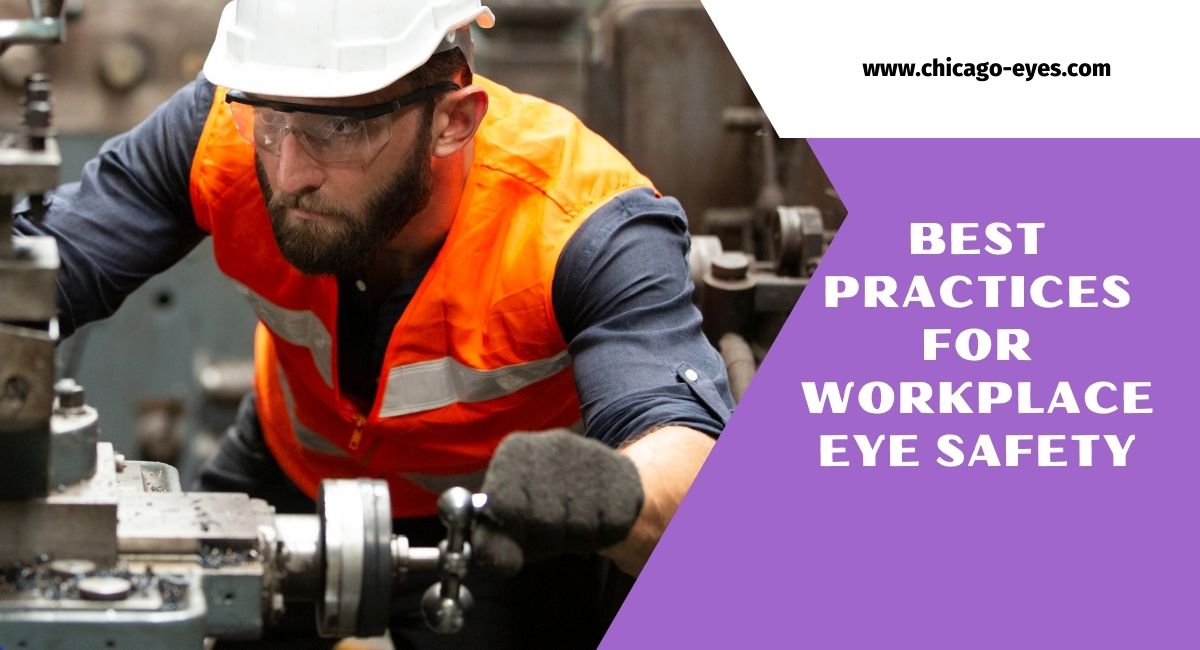In the United States, there are about 20,000 occupational eye injuries every year. Ocular dangers ranging from dust and flying debris to chemicals and laser radiation are common in many different sectors. Eye safety is a top priority for employers.
Depending on the particular risks that employees encounter, Personal Protective Equipment (PPE) alternatives include chemical goggles, laser safety glasses, and general safety glasses.
Encourage frequent eye exams, make sure PPE is used correctly, raise employee awareness of potential risks, and offer comprehensive training to protect workers’ eyes from work-related eye injuries. Make eye safety a top priority for a safer and healthier workplace.
What Potential Risks Might One Face At Work?
With the variety of work conditions available, there are many different types of eye dangers
- The eye being struck, scraped, or penetrated by sharp objects or metal
- Splashes of chemicals
- Burns caused by heat to the eye and its surroundings
The Best Methods For Maintaining Eye Safety
A variety of tactics are needed to ensure effective eye protection
1. Awareness Of Hazards
Recognizing and comprehending potential job hazards is the first step. This frequently entails assessing the workplace for the presence of projectiles, chemicals, heat, or lasers, assisting in risk mitigation, and selecting the proper personal protective equipment.
2. Frequent Ocular Examinations
Annual eye exams can stop long-term damage and identify problems early. Employers need to make sure that their health plans include coverage for vision care or provide extra assistance, such as in-person eye exams.
3. Usage Of PPE Properly
PPE’s efficacy depends on how it is used. It must fit properly to provide unobstructed, distortion-free vision. Regular cleaning and replacement of damaged PPE are necessary.
4. Reporting Of Incidents
Employers need to foster an environment where workers feel free to report risks and occurrences without worrying about the consequences.
5. The Right Equipment
Employees must be wearing the proper protection gear when they work in environments where chemicals, particulates, or other hazardous materials could get into their eyes.
Even though it may seem apparent, wearing eye protection is a critical first step in preventing injury.Eye safety calls for more than just donning goggles, glasses, or face shields, even though it’s an important starting step.
Employees must ensure that eye protection is fitted correctly. To safeguard workers from potential issues, employers must ensure that their employees are utilizing protective gear correctly. Gear that is too tight or too loose won’t be nearly as beneficial as a comfortable, secure fit.
6. Seminars On Safety
Every individual who is obliged to utilize personal protective equipment (PPE) at work must receive PPE (Personal Protective Equipment) training from their employer.
Take advantage of the chance to highlight the prevalence of eye injuries and potential hazards at work, as well as how and when to wear eye protection and how to take care of your eyewear. Guidelines for appropriate emergency response in the case of an eye injury should also be included in training.
7. Digital Eye Fatigue
Small text and images on digital devices are common, which makes it difficult for our eyes to focus. Additionally, people must discuss untreated eye strain during their regular eye checkups because it can result in headaches, fuzzy vision, and even nearsightedness, according to some.
To reduce eye strain, many patients find relief using a light computer prescription that has a non-glare covering. You should take a five-minute break and gaze out the window or down the long hallway at least once every hour.
To make the text easier to read at a comfortable distance, doctors also advise enlarging the font size and modifying the brightness and contrast.
8. Make Use Of Proper Lighting
Glare is one of the main causes of eye strain. Harsh overhead illumination or light from windows, usually immediately behind or in front of you, can generate glare on a computer screen. If needed, cover or obscure windows with drapes or blinds and adjust your computer screen to minimise glare.
9. Regularly replace your protective gear
Make sure your occupational eye protection is regularly inspected to make sure it hasn’t worn out or been damaged in any way.
Make sure to thoroughly clean any eye safety equipment that has come into contact with chemicals at work and replace the protective eyewear as needed.
10. Use Extra Caution When Handling Chemicals
Hazardous substances have the potential to seriously harm your eyes. Make sure to wear chemical-resistant eyewear and adhere to workplace safety procedures. Using safety equipment that isn’t intended for chemical exposure can be just as harmful as not using any at all.
11. Recognize The Signs Of Work-Related Eye Damage:
Among the medical signs of occupational eye injuries are blurred vision, eye pain, eye redness, and other symptoms. As soon as you discover any symptoms, consult your physician. Remember that some eye injuries cannot show symptoms until they are extremely advanced, so it’s critical to routinely assess the health of your eyes.
In summary, placing a high priority on eye safety at work is not only required by law but also essential to protecting workers’ health and output. Employers may make the workplace safer and healthier for everyone by putting best practices into effect, such as offering proper protective eyewear, holding frequent eye safety training sessions, keeping the workspace neat and orderly, and quickly addressing any eye-related dangers. Recall that taking care of your eyes now will ensure that you can see properly and perform your job efficiently in the future.
Learn More: Sudden Eye Blurriness in One Eye
